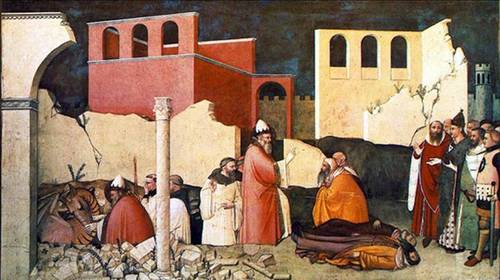to life; or the curing of Constantine of leprosy; and the Donation of Constantine. It is recorded that Pope Sylvester baptized Constantine. The historical evidence for this pontificate for this era is sorely lacking for such an important time in Church history. What is known of Sylvester is given to us through the Vita beati Sylvestri.
The lack of historical record, however, does not mean the events of history did not happen, it just means we don’t have reliable sources. However, given that the narratives are recorded in ecclesiastical memory and the liturgical patrimony of the Church, means that their was a historical man who followed Christ, ordained priest and elected Pope, and worked for the good of the Christian faith given in Tradition. Post-modern people often place too much emphasis on the manuscript tradition (what is absolutely verifiable) and too little weight on hagiographical materials, including homilies and pious legends, to give us a sense of Church history.
The son of Rufinus and Justa, Sylvester was ordained a priest by Pope Marcellinus and elected bishop of Rome in AD 314, after the death of Pope Saint Miltiades.
During his twenty-one year pontificate, in addition to the various churches honoring the martyrs, he oversaw with Constantine and Helena as patrons, the construction of three of the greatest
Roman churches: Saint John Lateran, Holy Cross of Jerusalem, and the first Saint Peter’s. Sylvester’s pontificate also saw the development of the Roman Liturgy, the foundation of a school of singers for the Liturgy and the publication of the first Martyrology. Further, Sylvester was instrumental in stemming the spread of Arianism throughout the Western church, as well as the promulgation of orthodox christology (homousion of the Son) in the wake of Nicea I (325).
